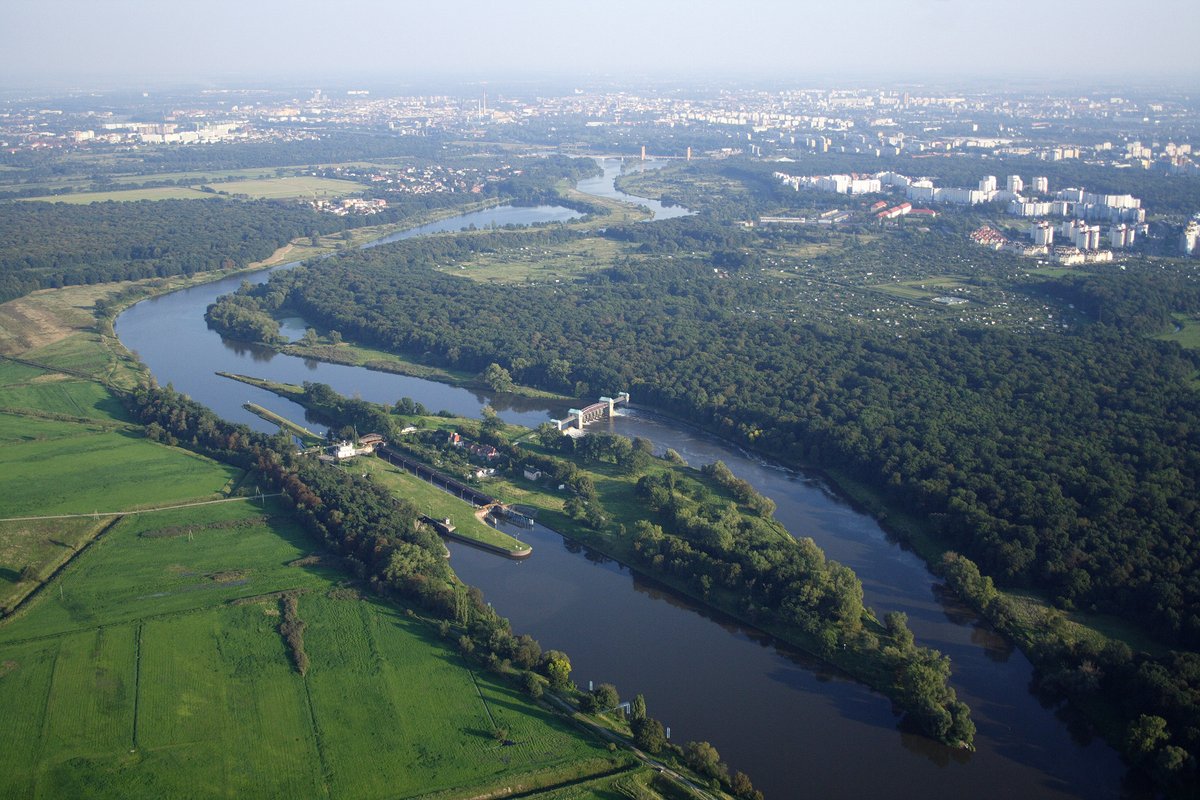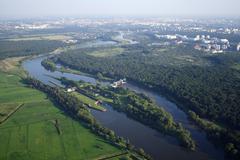
Visiting Most Rędziński: Hours, Tickets, and Nearby Historical Sites in Wrocław
Publication Date: 24/07/2024
Why Visit Most Rędziński
Most Rędziński, also known as the Rędziński Bridge, is one of Wrocław’s most iconic landmarks, celebrated for its modern engineering and architectural prowess. As the longest and highest bridge in the city, it serves as a crucial component of Wrocław’s transportation network and a symbol of resilience and progress. This comprehensive guide aims to provide visitors with all the essential information needed to make the most out of their visit to Most Rędziński, including its history, design, visitor tips, and nearby attractions.
The bridge, which spans the Oder River and is part of the A8 motorway, was designed by the Research and Design Team “Bridges – Wrocław” under the leadership of Professor Jan Biliszczuk. It was constructed by Mostostal Warszawa and Acciona Infraestructuras, with a total cost of 576 million PLN (Wikipedia). Despite facing significant challenges, including a major flood in 2010, the bridge was completed in 2011 and officially opened to traffic shortly thereafter (Wikipedia).
This guide will explore the architectural features of Most Rędziński, its significance in Wrocław’s infrastructure, and provide practical advice for visitors. Whether you are an engineering enthusiast, a history buff, or simply a tourist looking for picturesque views, Most Rędziński offers a unique and enriching experience.
What You Will Learn
- Introduction
- History of Most Rędziński
- Design and Construction
- Timeline of Construction
- Architectural Features
- Engineering Significance
- Visitor Information
- Visiting Hours and Tickets
- Best Viewing Spots
- Accessibility
- Guided Tours
- Nearby Attractions
- Wrocław Market Square
- Tumski Bridge
- Panorama of the Battle of Racławice
- ZOO Wrocław
- Cultural Significance
- Environmental Impact
- Future Prospects
- FAQ
- Conclusion
Introduction
Most Rędziński, also known as the Rędziński Bridge, is one of Wrocław’s most striking landmarks. As the longest and highest bridge in the city, it stands as a testament to modern engineering and architectural prowess. This article will provide an in-depth look at the bridge’s history, design, construction, and visitor information to help you make the most of your visit.
History of Most Rędziński
Design and Construction
The bridge was designed by the Research and Design Team “Bridges – Wrocław” under the leadership of Professor Jan Biliszczuk. The construction, carried out by Mostostal Warszawa and Acciona Infraestructuras, cost a total of 576 million PLN (Wikipedia).
Timeline of Construction
The contract for the bridge’s construction was signed on May 20, 2008. Despite challenges, including a significant delay caused by the 2010 flood that inundated the construction site, the main structure remained unaffected. The project was completed in August 2011, and the bridge was officially opened to traffic shortly thereafter. The name “Most Rędziński” was initially unofficial but became widely accepted after winning a naming contest held by the General Directorate for National Roads and Motorways (GDDKiA) with 55.38% of the votes (Wikipedia).
Architectural Features
Most Rędziński spans the Oder River and is part of the A8 motorway, serving as the Wrocław ring road. It is 612 meters long with a main span of 256 meters. The bridge’s pylon stands at 122 meters, making it a prominent city landmark (Wikipedia).
Engineering Significance
The bridge’s cable-stayed design allows it to span long distances without numerous piers, facilitating river traffic and preserving the natural flow. The use of high-strength materials and advanced construction techniques ensured its durability, even against natural disasters like the 2010 flood (Wikipedia).
Visitor Information
Visiting Hours and Tickets
Most Rędziński is accessible 24/7. There are no entry fees, making it an ideal spot for both spontaneous visits and planned tours.
Best Viewing Spots
The bridge can be best viewed from the banks of the Oder River, especially from nearby parks and green spaces. The view is particularly stunning during sunrise and sunset when the bridge is illuminated by natural light.
Accessibility
The bridge is easily accessible by car via the A8 motorway. Pedestrian pathways on the bridge allow visitors to walk across and enjoy views of the river and the city.
Guided Tours
For those interested in learning more about the bridge’s history and engineering, guided tours are available. These tours provide in-depth information about the design and construction process, as well as the challenges faced during the project.
Nearby Attractions
Wrocław Market Square
The lively Wrocław Market Square is a must-visit spot, home to numerous restaurants, cafes, and shops, perfect for relaxing and enjoying the local culture (Medium).
Tumski Bridge
Another iconic bridge in Wrocław, Tumski Bridge is a symbol of love and history, popular among couples and photographers (Medium).
Panorama of the Battle of Racławice
This unique museum offers a 360° live panorama of the Battle of Racławice, providing an immersive historical experience for visitors of all ages (Medium).
ZOO Wrocław
Celebrated for its clean environments and vast size, ZOO Wrocław is an ideal spot for both fun and relaxation. The zoo’s aquarium is a highlight, offering a moment of tranquility (The Places Where We Go).
Cultural Significance
Most Rędziński is not just an engineering marvel but also a symbol of Wrocław’s resilience and progress. The bridge’s construction and successful completion despite the 2010 flood demonstrate the city’s ability to overcome adversity. It has become an integral part of Wrocław’s infrastructure, facilitating transportation and contributing to the city’s economic growth.
Moreover, Most Rędziński has become a cultural landmark, attracting tourists and locals alike. Its striking design and prominent location make it a popular subject for photographers and artists. The bridge also serves as a venue for various events and activities, further enhancing its cultural significance.
Environmental Impact
The construction of Most Rędziński was carried out with careful consideration of its environmental impact. Measures were taken to minimize disruption to the natural flow of the Oder River and to protect the surrounding ecosystems. The bridge’s design also incorporates features that reduce its environmental footprint, such as energy-efficient lighting and sustainable materials.
Future Prospects
Looking ahead, Most Rędziński is expected to continue playing a vital role in Wrocław’s transportation network. The bridge’s robust design and construction ensure its longevity, and ongoing maintenance efforts will help preserve its structural integrity. As Wrocław continues to grow and develop, Most Rędziński will remain a key component of the city’s infrastructure, supporting its economic and cultural aspirations.
FAQ
What are the best times to visit Most Rędziński? The best times to visit are during sunrise and sunset for the most stunning views.
Is Most Rędziński accessible for pedestrians? Yes, there are pedestrian pathways on the bridge.
Are there any guided tours available? Yes, guided tours are available for those interested in learning more about the bridge’s history and engineering.
How can I get to Most Rędziński by public transportation? Most Rędziński is accessible by several bus and tram lines that connect to nearby stops. Check local schedules for the most convenient routes.
Conclusion
Most Rędziński is a testament to Wrocław’s engineering prowess and cultural heritage. Its history, architectural features, and significance make it a must-visit destination for tourists and a source of pride for the city’s residents. Whether you’re an engineering enthusiast, a history buff, or simply looking for a picturesque spot to enjoy the views, Most Rędziński offers something for everyone.
For more updates and related posts, follow us on social media and check out our mobile app Audiala.












































